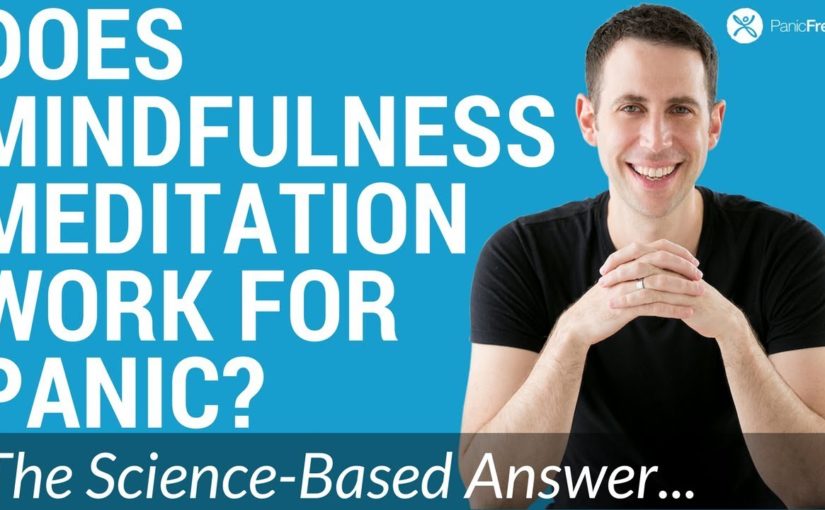In today’s video I’m going to share with you 5 essential, little-known scientific-facts and insights that you absolutely must know about, if you want to quickly and effectively treat your panic attacks. I’m also going to give you 2 unique, counterintuitive techniques, that have BOTH been scientifically proven to help treat anxiety and to treat panic disorder — so you can use these techniques to make a significant, positive difference in your life, today. Hi, I’m Michael Norman, and as scientist and paid-on-results anxiety specialist with clients from over 103 countries around the world, I’ve witnessed first hand how panic attacks and panic disorder, have impacted the lives of even the strongest, bravest people.
Whether someone’s a celebrity, a highly-respected doctor, a CEO, whether they’re a student, a stay at home mum, or anyone else, panic doesn’t discriminate. Almost 1 in 3 people will experience a panic attack in their life-time, and I’ve been through it too. Thankfully though, there’s some good news to this story, because thanks to the last 3 decades of scientific research, panic is now one of most treatable issues there is, if you get the right scientifically grounded help, and that’s what this video is all about.
Now, years ago Albert Einstein wisely pointed out: “If I were given one hour to save the world, I would spend 59 minutes defining the problem and one minute solving it.” This is especially true when it comes to successfully treating the panic attacks you’ve had, because, as you’ll soon discover for yourself, once you have an accurate understanding of what’s been happening to you, how panic really works, and what’s been keeping it in your life, surprisingly, the solution suddenly becomes much clearer, as does the path back to a normal, panic-free life.
So with all of this in mind, let’s move onto the first counterintuitive fact, FACT 1: The Term “Panic Attack” Is Not Only Completely Misleading, It Can Actually Make It More Difficult To Recover. Words carry a lot of power. They can mislead us, they can deceive us, they can send us in the wrong direction, down the wrong path, or they can illuminate deeper truths, show us where to go, and help us to find our way home. And knowing this is true, I hope it’s obvious why I consider it so very important, that you know, that a panic attack is absolutely NOT an “attack”. That phrase is totally misleading, and as you’ll understand before you finish this video, it can create a mindset that make things much worse, making it much harder to successfully treat panic. If we really care about solving your problem once and for all, then, obviously, we really care about the truth, and the overwhelming scientific evidence is that every panic attack you’ve ever had, was not an attack at all, but surprisingly, it was just an innocent, very well-intended, over-protective MISTAKE.
To explain this more, I’m going to share with you a short clip from my “Panic Free TV Foundation” video series, which presents a simple but important thought-experiment, Which of these two smoke alarms would you prefer to have protecting you in your home? Would you prefer to have smoke alarm that sometimes FAILS to go off, and stays silent, even though there’s a deadly fire in your house? Or, would you prefer to have a smoke alarm that never misses a real fire, but occasionally goes off when you burn the toast, even though there is no danger, and everything is actually fine? Now of course, we’d all prefer to have a perfect smoke alarm system, that never make any mistakes — but the reality is, we live in complex and often ambiguous world. And so if you had to choose between one of these two options, what would you chose? An under-sensitive smoke alarm that could miss a real fire and kill you? Or an over-sensitive smoke alarm that occasionally has unpleasant, noisy false alarms, but never misses a real fire, and always keeps you safe? It’s a simple answer, isn’t it.
When it comes to our survival, to our LIFE, it’s better to have an alarm system that errs on the side of safety, even if that means, we sometimes get false alarms. So what does this have to do with panic? Well, "panic attacks" are nothing more than false alarms of our over-protective, life-saving fear systems. And while it probably hasn’t felt that way for you in the past, the truth is that a panic "attack" is just a terrifying, overwhelming, over-protective MISTAKE. It’s a mistake, that ironically, is motivated by your brain’s #1 priority in life — to keep you safe. Panic attacks are our brain and body, following the same “better safe than sorry” philosophy, that every good smoke detector system uses. And it’s far healthier, in fact it’s optimal, to have a fear system that is biased to be over-sensitive and to occasionally give us false alarms, than it is to have an under-sensitive system, that could miss real danger, that could kill us. So a panic attack is JUST an over-protective mistake. The only real problem, and it’s a big one, is that it’s a terrifying mistake.
It’s a mistake that can leave us feeling exposed, vulnerable, and unsafe. Even though no one dies from a panic attack, and even though panic could never ever make anyone truly go crazy, the false alarm of a panic attack often creates a very powerful ILLUSION, that these things could happen. And that’s why I really believe, that you are incredibly, So again, a panic attack is NOT an “attack”. Instead, it’s a false alarm. It’s a mistaken effort to protect you, from a danger that’s not there.
Unfortunately, the reason why it’s so scary, the reason why it’s one of the most horrible experiences anyone could ever go through, is because a false alarm sounds the same as a real alarm. And with a panic false alarm, because we so often don’t know what’s going on, the confusion and uncertainty can make everything even more alarming. And that’s why it’s so very important you know about fact #2. Believe it or not, all the strange and scary symptoms you’ve had because of panic, especially the ones that seem the most dangerous, all they really are, are just harmless byproducts, of a false alarm. Fortunately, thanks to a lot of research, we know how a false alarm alone, can create them, We know they can’t kill you, We know they can’t make you truly go crazy, And we know that, reassuringly, as you learn about this, it can help you immediately feel safer and more secure. Now, since we have a lot to cover in this video, I’m not going to go into the details here, even though this is a very important topic.
Since I cover this in depth in my free “Panic Free TV Foundation Series”, if you want to learn more, as I recommend you do, then you’ll find what you’re looking for when you get to episode 2 of my Foundation Series. Again, my it’s completely free, at least at the moment, so you can watch it by visiting www.PanicFree.TV, or by clicking YouTube information icon in the top right hand corner of this video. Okay let’s move on to, FACT 3: There is the core, hidden pattern behind every panic false alarm you’ve ever had , and as you’ll soon see, this pattern reveals to us, the fastest, most effective, most direct path, back to a normal, panic-free life. If you’ve ever been told that you have panic disorder, even though I’m not at all a fan of that label at all, this is the core pattern we want to shift together, so that you can finally be 100% panic-free.
To explain more, here’s another short clip from my foundation series, A panic attack happens when anxiety creates body sensations and anxious thoughts, And, because our brain has mistakenly learnt to fear those body sensations or thoughts, it creates even more anxiety. That increased anxiety then creates even MORE body sensations and thoughts, and around the cycle people go. I call this The Panic Pattern, because it’s THE pattern behind every scary false alarm. It’s a HARMLESS vicious cycle, that can escalate, into a full fight/flight response. So, let me share with you one of the most common examples of this pattern, because it helps illustrate this, more clearly. Since anxiety makes everyone’s heart beat a little faster, if something happens in our lives that makes us fearful or anxious enough, naturally our heart will speed up.
Again, this is a completely natural and healthy response that we all have. But if someone is scared of that, if they’re scared of having a faster heart beat, then anytime they get anxious enough, for whatever reason, it can trigger The Panic Pattern. Anxiety would make their heart beat faster, and a faster heart beat would make them more anxious, which would further increases their heart beat, and a harmless, but scary vicious cycle, would ensue. This is the core pattern behind every panic false alarm. And it can work if people fear a faster heart beat, or any other anxiety-related body sensation, that they happen to be scared of. Again, a panic false alarm happens when anxiety creates body sensations and anxious thoughts, and, because our brain has mistakenly learnt to fear those body sensations and thoughts, that creates even more anxiety. And that increased anxiety then creates even MORE body sensations and thoughts, and around the cycle we go. Now you might be asking: what’s the deal with panic that’s triggered by external situations — like driving, or flying, shopping, leaving the house, or other things? Why does that happen? Well, if it happens, it’s because those external situations have become associated with anxiety, and so they feed right into The Panic Pattern.
Anything that triggers enough anxiety to create a feared body sensation, can trigger the whole vicious cycle, and therefore a panic attack. Now, there are several reasons why understanding “The Panic Pattern” is so important — the most important by far, is that it reveals to us the fastest, most effective, most direct path, back to a normal, panic-free life. I’ll talk about this more in just a moment, but first, it’s essential we cover fact #4 Following commonsense tends to backfire, keeps people stuck, and reinforces The Panic Pattern If you’ve struggled to find the answers you need, then please know, it’s definitely NOT your fault.
Even though panic is one of the most treatable issues there is, unfortunately it’s also one of the most counterintuitive. What seems as if it SHOULD work with panic DOESN’T. And what DOES work tends to fly in the face of commonsense. There are several important examples of this, but for now, in this video, I’m just going to mention one very, very briefly, And that example of how commonsense tends to backfire with panic, is trying to fight it Trying to stop, suppress, or fight back against panic is one of the most natural responses in the world. Any sensible, intelligent person would try to do it, But unfortunately, as a huge amount of research shows, when it comes to panic what we resist doesn’t just persist, unfortunately, it often becomes stronger, more resilient, and more enduring. When we try and fight panic, it typically leads to more intense, more enduring panic-related body-sensations and thoughts, not less. In the short-term this fuels to “The Panic Pattern”, and in the long-term it increases the chance of further, frequent, ongoing false alarms.
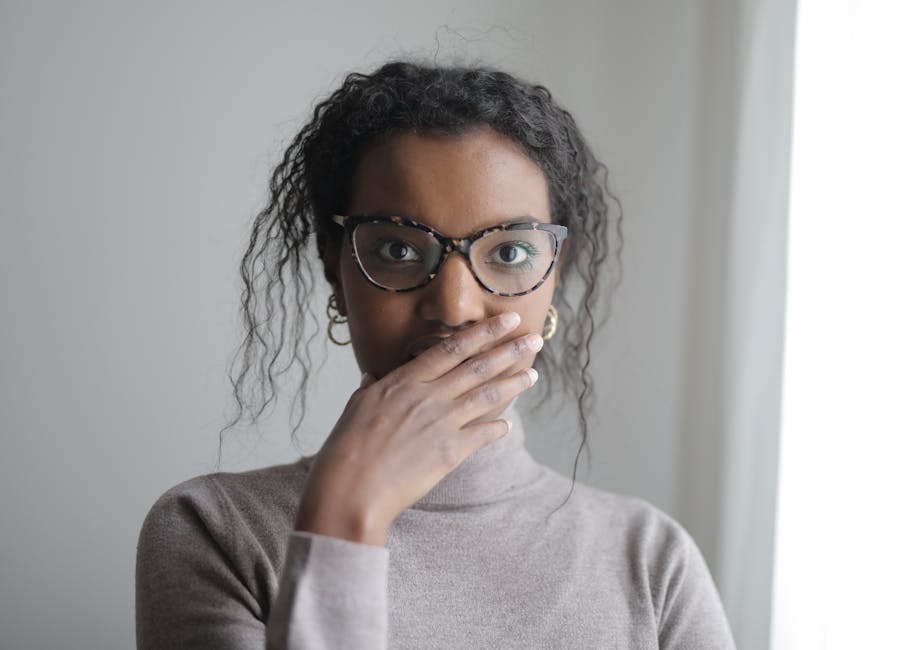
While I explain this in depth in my foundation series, I hope you can now appreciate yet another reason why I am definitely not a fan of the term “panic attack”. When people are mislead into believing that panic is an “attack”, or a “trick”, or a “monster”, or any other unhelpful, conflict based metaphor, then it’s only natural that they’d try and fight it, which unfortunately doesn’t only NOT help, it actively makes the situation worse. Believe it or not, even doing absolutely NOTHING, is a far more effective strategy than trying to fight panic, and if that statement seem a little crazy to you, then consider that doing essentially nothing, was a key part of a pioneering approach to panic, developed my compatriot Claire Weekes, more than 60 years old.
STRATEGY #1 Weekes was an Australian doctor, and she was the pioneer of acceptance-based approaches for panic and anxiety, which are so common today. She urged people not to try and fight panic, but instead, to utterly accept it, to “float” through it, to use her words, and to let time pass, until it goes away. How could this be helpful? Well, if we go back to the scene I you showed earlier in this video, with burning toast, when we try to fight a false alarm, it’s like pushing that toast back into the toaster, and turning that toaster up.
Even though it’s still just burning toast, it leads to much more smoke, and as a result, a much longer false alarm. However, when we utterly accept a false alarm, it’s like turning that toaster off. Even though the smoke may linger for a while, if you let time pass as Weekes used to say, the smoke WILL clear, and things will more quickly return to normal. Now, obviously, I’ll well aware that trying to accept a false alarm is far, far easier said than done — and this is why acceptance-based approaches take time and practice to work.
Weekes was very honest about this, and she urged people to be realistic, so they would stick with the process, even through setbacks. In her own words, if you use an acceptance-based approach, “don’t count the days, don’t count the months, let time pass” Because, “even with compete acceptance, it takes about 2 months to desensitise the body” While this has been shown to be true for all acceptance-based approaches scientifically studied, even though acceptance is a slow process, it does help, if people stick with it. And for the 1960’s accepting panic and anxiety was a revolutionary idea, which helped hundreds of thousands of people, who way back, at that point in history, had little else that worked. Now, since were covering such an important topic here, that of NOT fighting panic, I want to share a second, even more useful strategy, one that you can use to actually stop a false alarm, if you have one. This is strategy #2 Now, before I share this strategy with you, I need to warn you upfront, that when I explain it you, you’ll probably think it’s totally crazy. That’s totally ok, but also keep in mind that we know from research, that this counterintuitive strategy is more effective than many of the most commonly used approaches to treating panic.
It’s is more effective than breathing exercises. It’s more effective than relaxation techniques. And it’s more effective than cognitive approaches — where someone tries to use logic to dismiss, talk back to, or “correct” anxious thoughts. What’s this “crazy” strategy that can actually help? It’s using a paradoxical approach where, if you get a false alarm, instead of trying to fight it, you VOLUNTARILY try to make it stronger and last longer. Now, how could such a “crazy” approach ever work? Well there are several reasons beyond the scope of this video, but to give you just one reason here, I’d like you to consider this: Have you ever tried to force yourself to fall asleep, but as a result, you found yourself being more awake? Have you ever tried so hard to forget something, that you ending up thinking about it even more? Or have you’ve ever tried to force yourself to be attracted to someone you didn’t have ANY feelings for, and, as a consequence, you became even more aware that person wasn’t right for you.
If you’ve ever had one of these experiences, then you might appreciate that, when we try to force an involuntary, automatic, mental or emotional process, sometimes all that effort backfires, and it inhibits that very process. This is something we can use to our advantage with panic, and it’s why, when I first meet a new client, if they’re having a false alarm because they’ve left their comfort zone even to talk to me, I never ask them to relax. Instead, very often, I ask them to voluntarily make the false alarm a LOT bigger.
I ask them to voluntarily give me the biggest false alarm they’ve ever had. And what happens universally, is they can’t. Paradoxically, it relaxes them. Now, obviously, when I work with clients 1-on-1 there is a unique art and skill to making sure this works optimally for each individual, but the use of paradoxical approaches like this, isn’t something I invented. Famous therapists like Alfred Adler, Victor Frankl and Milton Erickson, as far back as 90 to 100 years ago, EACH independently discovered that instead of trying to fight with a problem, sometimes you get far better results by, paradoxically, trying to encouraging it. When done correctly, even with self-application, even in a basic form as I’m sharing with you here, this approach has been shown to be a useful first step for helping people with panic — one that, again, is more effective than breathing exercises, more effective than relaxation techniques, and more effective than trying to use logic to debate, talk-back to, or change anxious thoughts.
Again, the approach is, if you get a false alarm, instead of trying to fight it, you voluntarily try as hard as you can to FORCE IT, trying with all your willpower, to compel it to become the biggest, longest lasting false alarm you’ve ever had, as fast as it can. Now, as useful as this approach can be as a first step, obviously it’s just that, a first step. It’s a tool to help people realise that panic doesn’t work the way you think it does, and that, paradoxically, you can get much more control when you don’t follow commonsense.
Now, I want to shift mindsets and very briefly introduce you to a totally different orientation to treating panic. Because, obviously, as nice as it is to have ways to accept, cope with, or even stop a false alarm after it happens, obviously, approaches like that are highly reactive. You have to remember what to do, You have to be able to consciously apply that strategy in the heat of the moment, which often isn’t easy, And worst of all, even if you have a really good technique that works, you’ve still had to go through the unpleasant experience of having your day interrupted by a false alarm Obviously, none of that is optimal at all. So what’s the solution? Well, I’m sure you’ve heard the old saying that prevention is better than cure, and obviously, what’s far more useful and far more effective, is if we can help you automatically prevent future false alarms, so they never even happen in the first place. Because, for me, “Panic Free" is NOT about coping better with false alarms, because if you have to cope with or accept false alarms, that means you still get them.
“Panic Free” doesn’t even mean that you’re able to immediately stop a false alarm, as soon as it begins — because, at best, that's just a good start. What "Panic Free" really means is that panic has truly become a total non-issue for you, in your life. It means you're naturally and effortlessly, as panic-free, care-free and “normal”, as anyone else you know, without you having to even think about it. And what’s the fastest, most effective way to help you reach the point where you’re truly panic free? Well that leads us into fact #5 FACT 5: We Can Automatically Prevent Future False Alarms, By Quickly Ending “The Panic Pattern” Whether you’ve had just a few false alarms so far, whether you’ve had them for years or even decades, or whether you’ve been diagnosed as having panic disorder, if we can change your automatic responses so that instead of feeling anxious you’re AUTOMATICALLY calm, relaxed, and secure in response to the very triggers that triggered “The Panic Pattern” for you in the past, then there can’t be a vicious cycle, and you won’t be able to panic.
This is the focus of all my work, and obviously, if you like this video and you want more of my help, then obviously I have so much more to share with you. While you’ll notice I have a range of resources on my website, including ways you can work with me personally, I recommend you start first with my free foundation series, which goes into everything we’ve talked about here, plus a lot more, in much more detail. Again, my foundation series is totally free at the moment, and you can watch the first episode in full right now by clicking the link in the description, by visiting my website at www.panicfree.tv, or by clicking the information icon in the top right hand corner of this video. Thousands of people, from all walks of life, have gone through my foundation series, and since so many of them have openly said that it’s made a real, positive difference in their lives, I think you’ll discover too, when you watch it for yourself, that it also makes a real, positive difference for you. I hope this video has obviously been helpful for you, and if it has then please leave me a comment below, so that I know, you’d like me to make more videos, like this video here on YouTube.
Also, if you’d like be immediately notified as soon as I publish new, helpful videos, like this video here, then obviously subscribe to my YouTube channel and automatically, this will happen. Remember, panic is one of the most treatable issues there is, if you get the right scientifically grounded help. You are not alone, and not matter what you’ve been through, there’s so much we can do to help make an immediate positive difference in your life. Thank you so much for watching. I hope again that this video was incredibly useful for you. I’m Michael Norman, and this has been another episode of Panic Free TV.
As found on YouTube
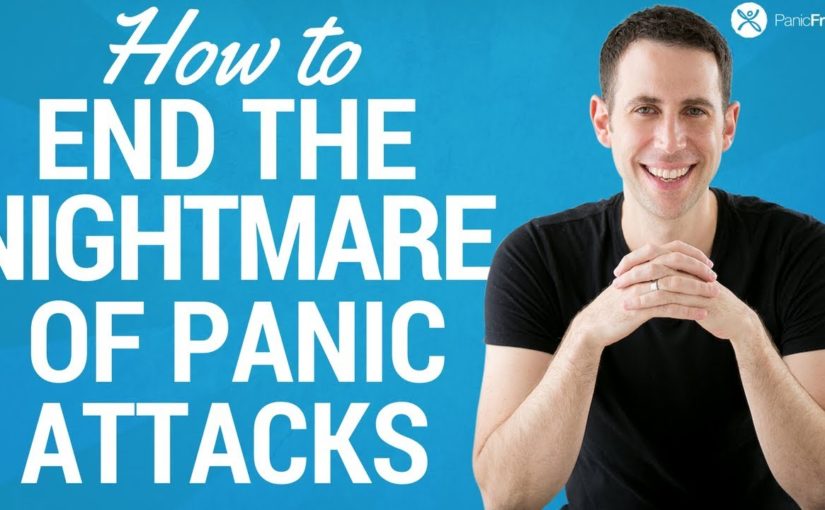
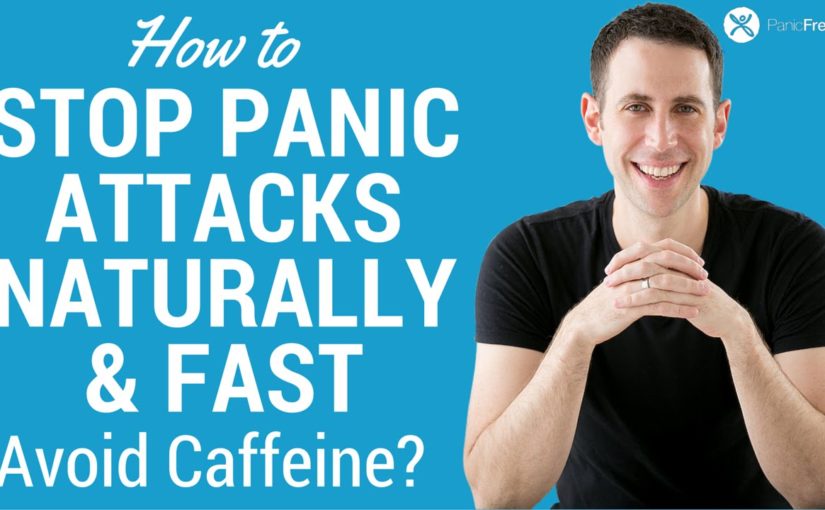

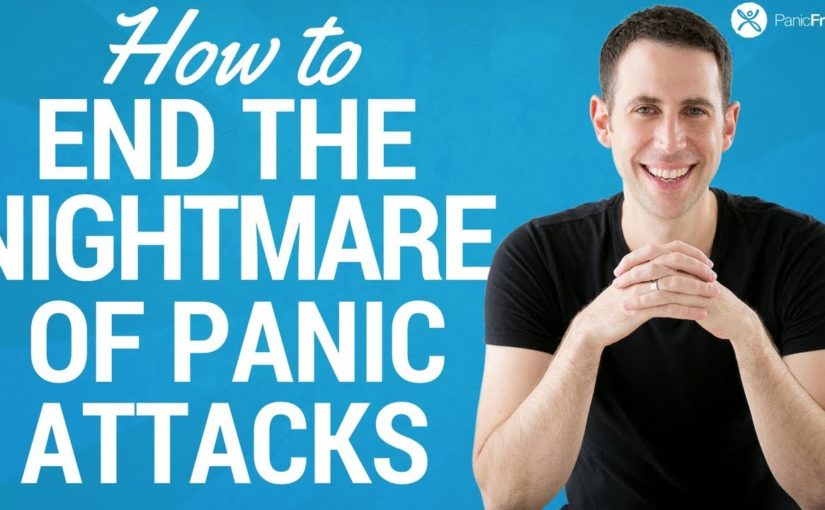
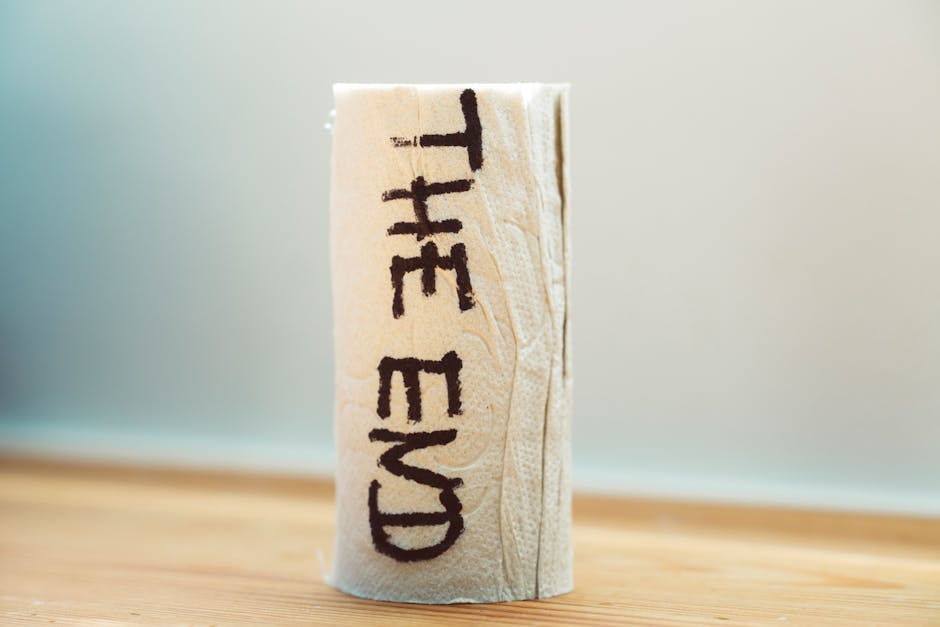
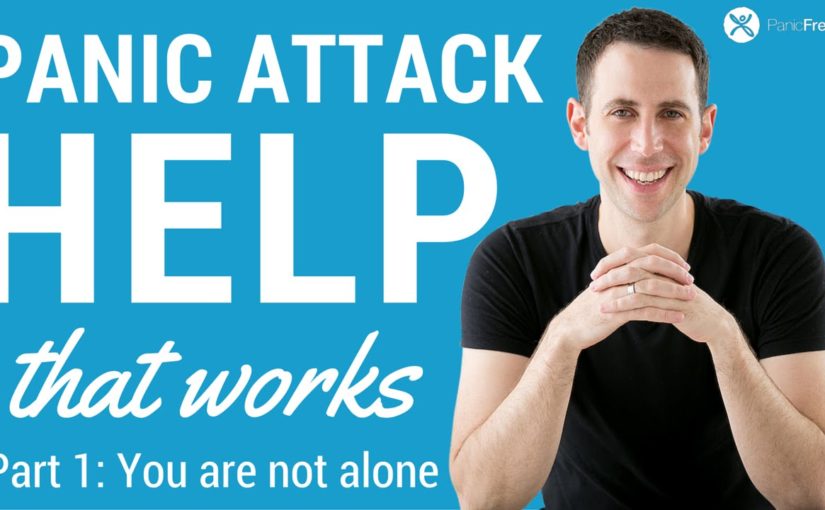
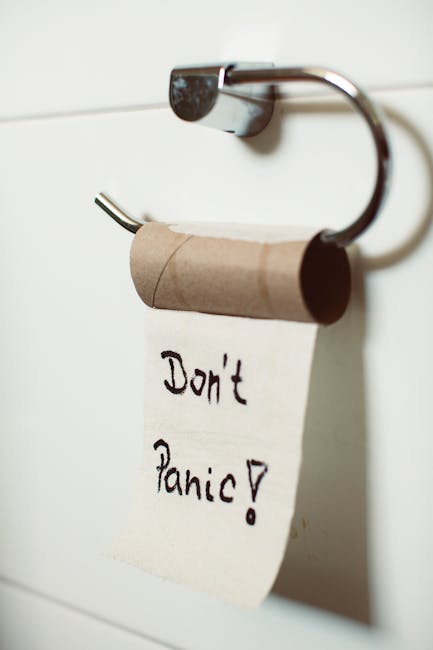
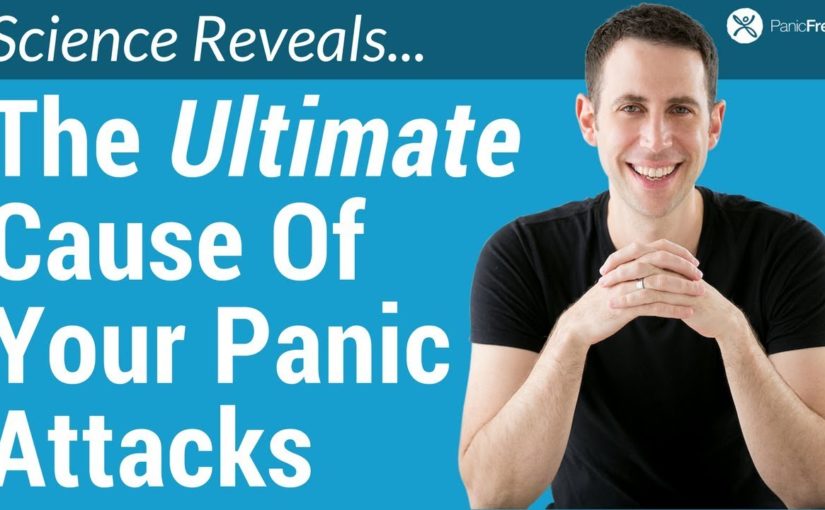
 And so if you had to choose between one of
these two options, what would you chose? An under-sensitive smoke alarm that could
miss a real fire and kill you? Or an over-sensitive smoke alarm that occasionally
has unpleasant, noisy false alarms… but never misses a real fire, and always keeps
you safe? It’s a simple answer, isn’t it. When it comes to our survival… to our
LIFE… it’s better to have an alarm system that errs on the side of safety… even if
that means, we sometimes get false alarms. So what does this have to do with panic? Well,
panic attacks are nothing more than “false alarms” of our over-protective, life-saving
fear systems. And while it probably hasn’t felt that way for you in the past… the truth
is that a panic attack is “JUST” a terrifying, overwhelming, over-protective MISTAKE.
It’s a mistake, that ironically… is motivated by your brain’s #1 priority in life — to
keep you safe. Panic attacks are our brain and body, following
the same “better safe than sorry” philosophy… that every good smoke detector system uses.
And it’s far healthier… in fact it’s optimal in an often uncertain world … to have a fear system that is biased
to be over-sensitive and to occasionally give us false alarms….. Than it is to have an
under-sensitive system, that could miss real danger, that could kill us.
So a panic attack is JUST an over-protective mistake.
The only real problem, and it’s a big one… is that it’s a terrifying mistake.
It’s a mistake that can leave us feeling exposed, vulnerable… and unsafe.
Even though no one dies from a panic attack… and even though panic could never ever make
anyone truly go crazy… the false alarm of a panic attack often creates a very powerful
ILLUSION, that these things could happen. And that’s why I really believe… that
you are….. So the ultimate cause of panic attacks is
that we all have brains that are biased to take a better safe than sorry approach. This
is a very important, healthy bias to have — because if we didn’t all have this bias,
we literally wouldn’t be alive as a species. The downside though, is that again, like every
good smoke detector system… sometimes mistakes happen and we get false alarms. And while
it might still be a little hard to believe right now… again, a panic attack is just
an innocent, very well-intended, OVER-PROTECTIVE mistake. It’s a mistaken effort to protect
you… from a danger that’s not there. So why do some people get panic false alarms,
while others don’t? And why have you experienced so many false alarms? Well this is where other
factors come into play — and I cover these factors and a lot more… inside my free “Panic
Free TV” foundation series. In this series I help take away the mystery and confusion
surrounding what you’ve been going through. I explain how panic and anxiety really work…
and I give you the foundations you need, to start you on your journey back to a normal,
panic free life. Again… my foundation series is totally free, and you can watch the first
episode in full, right now… just by clicking on the link on the screen or in the description
below, and registering your details. I hope this video has been valuable to you. I’m
Michael Norman, and thank you so much for watching..
And so if you had to choose between one of
these two options, what would you chose? An under-sensitive smoke alarm that could
miss a real fire and kill you? Or an over-sensitive smoke alarm that occasionally
has unpleasant, noisy false alarms… but never misses a real fire, and always keeps
you safe? It’s a simple answer, isn’t it. When it comes to our survival… to our
LIFE… it’s better to have an alarm system that errs on the side of safety… even if
that means, we sometimes get false alarms. So what does this have to do with panic? Well,
panic attacks are nothing more than “false alarms” of our over-protective, life-saving
fear systems. And while it probably hasn’t felt that way for you in the past… the truth
is that a panic attack is “JUST” a terrifying, overwhelming, over-protective MISTAKE.
It’s a mistake, that ironically… is motivated by your brain’s #1 priority in life — to
keep you safe. Panic attacks are our brain and body, following
the same “better safe than sorry” philosophy… that every good smoke detector system uses.
And it’s far healthier… in fact it’s optimal in an often uncertain world … to have a fear system that is biased
to be over-sensitive and to occasionally give us false alarms….. Than it is to have an
under-sensitive system, that could miss real danger, that could kill us.
So a panic attack is JUST an over-protective mistake.
The only real problem, and it’s a big one… is that it’s a terrifying mistake.
It’s a mistake that can leave us feeling exposed, vulnerable… and unsafe.
Even though no one dies from a panic attack… and even though panic could never ever make
anyone truly go crazy… the false alarm of a panic attack often creates a very powerful
ILLUSION, that these things could happen. And that’s why I really believe… that
you are….. So the ultimate cause of panic attacks is
that we all have brains that are biased to take a better safe than sorry approach. This
is a very important, healthy bias to have — because if we didn’t all have this bias,
we literally wouldn’t be alive as a species. The downside though, is that again, like every
good smoke detector system… sometimes mistakes happen and we get false alarms. And while
it might still be a little hard to believe right now… again, a panic attack is just
an innocent, very well-intended, OVER-PROTECTIVE mistake. It’s a mistaken effort to protect
you… from a danger that’s not there. So why do some people get panic false alarms,
while others don’t? And why have you experienced so many false alarms? Well this is where other
factors come into play — and I cover these factors and a lot more… inside my free “Panic
Free TV” foundation series. In this series I help take away the mystery and confusion
surrounding what you’ve been going through. I explain how panic and anxiety really work…
and I give you the foundations you need, to start you on your journey back to a normal,
panic free life. Again… my foundation series is totally free, and you can watch the first
episode in full, right now… just by clicking on the link on the screen or in the description
below, and registering your details. I hope this video has been valuable to you. I’m
Michael Norman, and thank you so much for watching..